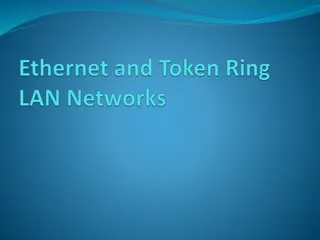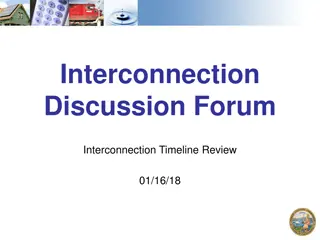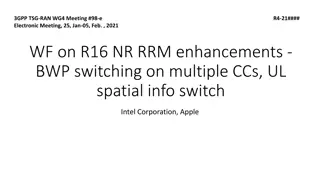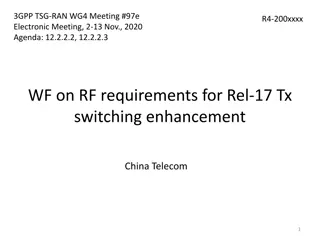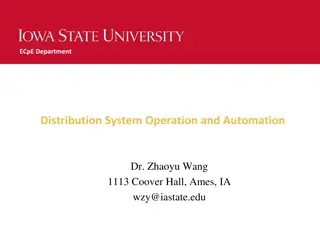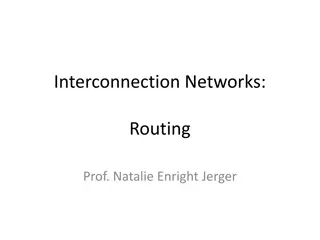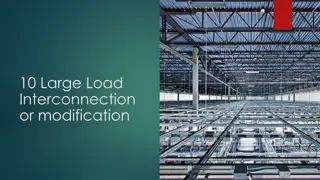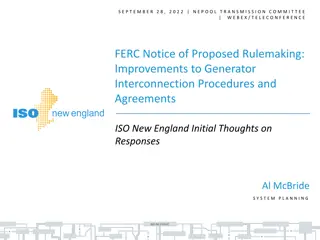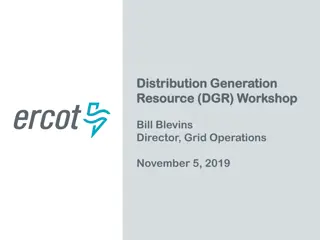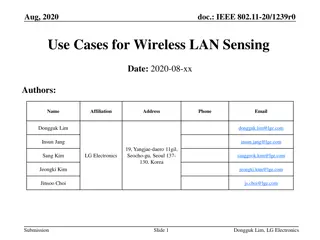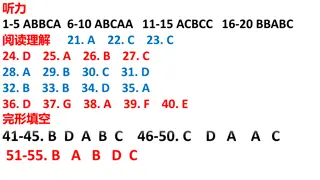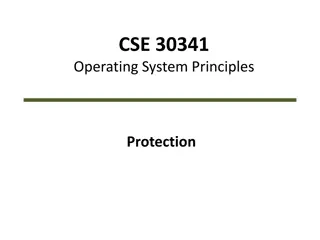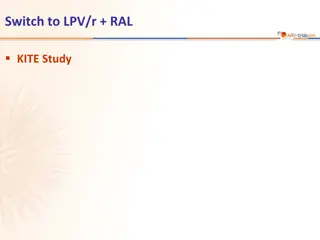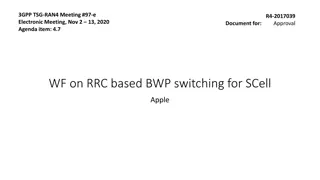Understanding LAN Interconnection and Switching Technologies
This content delves into the concepts of interconnecting LANs, exploring the reasons and methods behind partitioning LANs and interconnecting them at different layers using repeaters, hubs, bridges, switches, and routers. It also highlights the differences between these devices in terms of their network layers and functionalities. Additionally, it discusses the role of hubs in extending network segments and the operation of switches in forwarding Ethernet frames based on MAC addresses.
Download Presentation

Please find below an Image/Link to download the presentation.
The content on the website is provided AS IS for your information and personal use only. It may not be sold, licensed, or shared on other websites without obtaining consent from the author. Download presentation by click this link. If you encounter any issues during the download, it is possible that the publisher has removed the file from their server.
E N D
Presentation Transcript
Chapter 4 Data Link Layer Switching Interconnecting at different layers Transparent bridges Spanning tree algorithm Virtual LAN (VLAN) Reading Section 4.8 1
Interconnecting LANs Why? When too many machines are in a single LAN, the bandwidth may not be sufficient to support all the machines, need to partition one LAN into multiple LANs to get higher aggregate throughput. 1Gbps for all machines .vs. 1Gbps for each machine When the area is too big for a single LAN (e.g. 5km for Ethernet)? We can create multiple collision domains and interconnect the LANs. For security reasons. Ethernet cards support a promiscuous mode which allows a station to get all frames received. 2
Interconnecting at Different Layers Repeaters/hubs: physical layer, copy signals from one network to another network. Bridges/switches: data link layer, (selectively) copy frames from one network to another network. Routers/ network layer gateways: network layer, routing and forwarding. application gateway or converter: application layer, translate between OSI mail and SMTP mail 3
Question What is the main difference among repeater/hub, bridge/switch, and router? 4
Question What is the main difference among repeater/hub, bridge/switch, and router? Repeater: physical layer (Layer 1) device, sees 1 s and 0 s, naively forwards what it sees in a port to all other ports Switch: data link layer (Layer 2) device, sees frames with layer 2 destination address in a port and may forward a frame only to the port toward the Layer 2 destination Router: network layer (Layer 3) device, sees packets with IP (layer 3) destination addresses, route the packet toward the layer 3 address 5
Interconnecting with Hubs Backbone hub interconnects LAN segments Extends max distance between nodes But individual segment collision domains become one large collision domain Can t interconnect 10BaseT & 100BaseT hub hub hub hub 6
Switch Data Link layer device stores and forwards Ethernet frames examines frame header and selectively forwards frame based on MAC destination address when frame is to be forwarded on segment, uses CSMA/CD to access segment transparent hosts are unaware of presence of switches plug-and-play, self-learning switches do not need to be configured 7
Forwarding switch 1 3 2 hub hub hub How to determine onto which LAN segment to forward frame? Looks like a routing problem... 8
Self Learning A switch has a switch table (hash table in the book) Entry in switch table: (MAC Address, Interface, Time Stamp) Stale entries in table dropped (TTL can be 60 min) Switch learns which hosts can be reached through which interfaces When a frame is received, switch learns location of sender: incoming LAN segment records sender/location pair in switch table 9
Filtering/Forwarding When switch receives a frame: index switch table using MAC dest address if entry found for destination then { if dest on segment from which frame arrived then drop the frame else forward the frame on interface indicated } else flood on which the frame arrived forward on all but the interface 10
An Example Suppose C sends frame to D address interface A B E G switch 1 1 1 2 3 3 2 hub hub hub A I F D G B C H E Switch receives frame from from C notes in switch table that C is on interface 1 because D is not in table, switch forwards frame into interfaces 2 and 3 frame received by D 11
Switch Example Suppose D replies back with frame to C. address interface A B E G C switch 1 1 2 3 1 hub hub hub A I F D G B C H E Switch receives frame from from D notes in switch table that D is on interface 2 because C is in table, switch forwards frame only to interface 1 frame received by C 12
Looping Problem This simple self-learning mechanism does not work for complex network topology. What happens when the switches form loops? Solution: don t allow loops to occur in the forwarding path by constructing a spanning tree. A spanning tree of a graph G is a subgraph of G such that all nodes are connected without a loop. How to build a spanning tree of a graph G? One way to do it is to fix a root and compute the shortest paths from the root to all other nodes. For example, the switch will smallest MAC address can be chosen as the root. All other switches keep the interfaces active if they are on shortest path, and turn off other interfaces. 13
Switch: Traffic Isolation Switch installation breaks subnet into LAN segments Switch filters packets: Same-LAN-segment frames not usually forwarded onto other LAN segments Segments become separate collision domains switch collision domain hub hub hub collision domain collision domain 15
Switches: Dedicated Access Switch with many interfaces Hosts have direct connection to switch No collisions; full duplex A C B switch Switching: A-to-A and B-to-B simultaneously, no collisions C B A 16
Institutional network mail server to external network web server router switch IP subnet hub hub hub 17
Switches vs. Routers both store-and-forward devices routers: network layer devices (examine network layer headers) switches are link layer devices routers maintain routing tables, implement routing algorithms switches maintain switch tables, implement filtering, learning algorithms, cannot use redundant path. 18
Virtual LANs VLANs (Virtual LANs) splits one physical LAN into multiple logical LANs to ease management tasks Ports are colored according to their VLAN
Virtual LANs IEEE 802.1Q Bridges need to be aware of VLANs to support them In 802.1Q, frames are tagged with their color First VLAN switch adds tag, last VLAN switch removes tag. Legacy switches with no tags are supported
Virtual LANs IEEE 802.1Q 802.1Q frames carry a color tag (VLAN identifier) Length/Type value is 0x8100 for VLAN protocol 0x8100 is not a legitimate length for Ethernet frames Tag is only needed by the switches, but end host.




